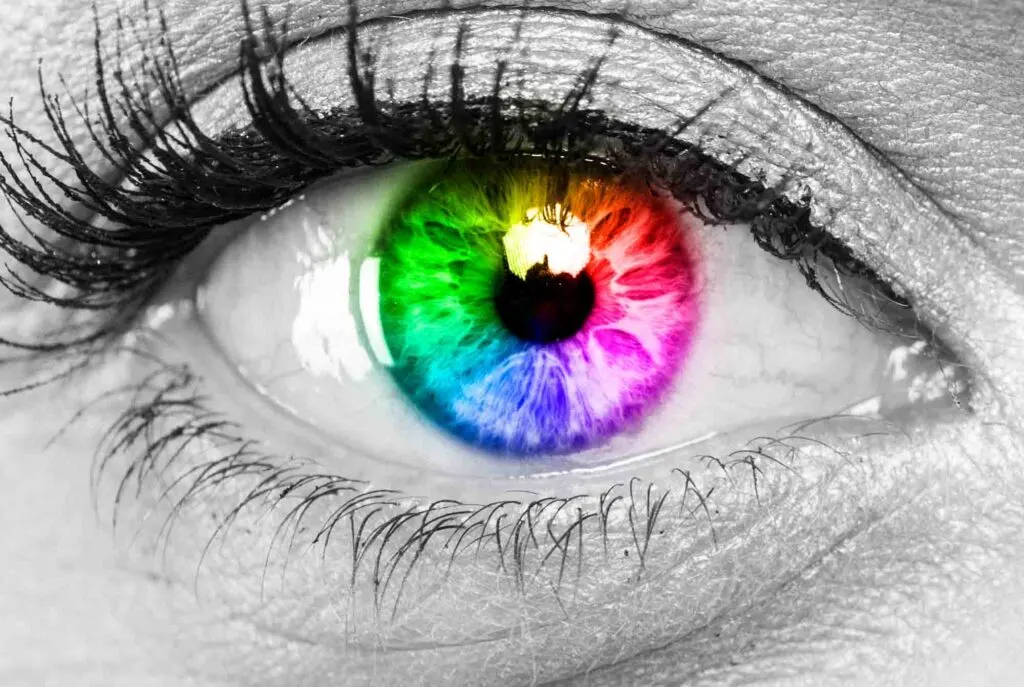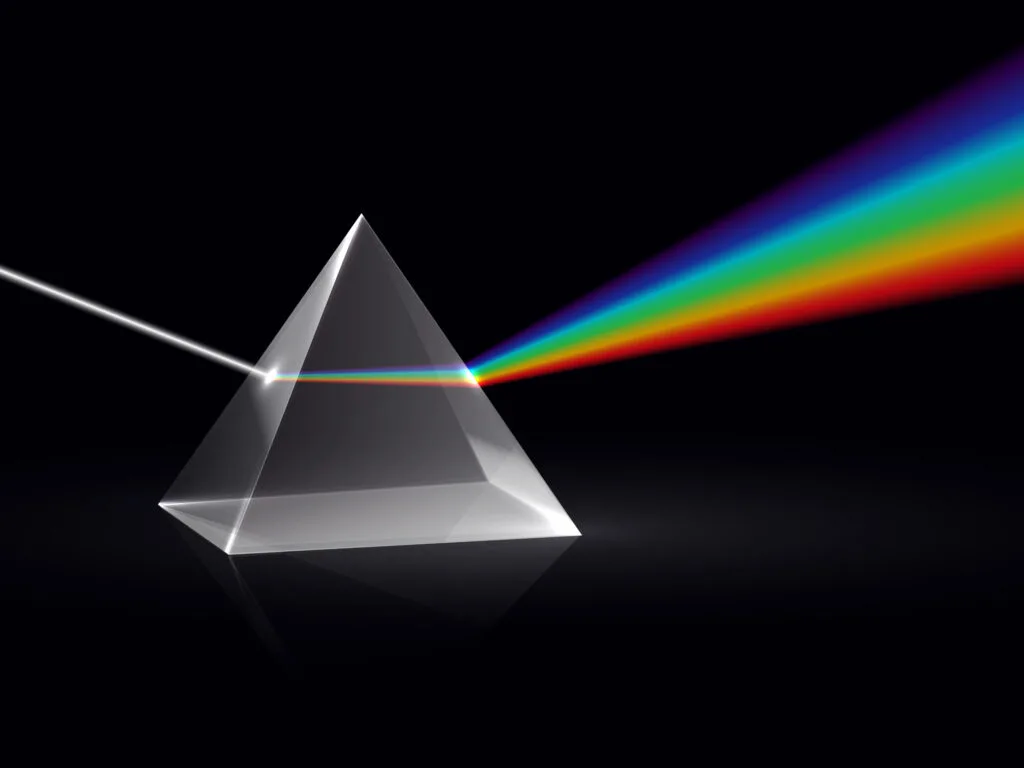In the world of color, the question “are black and white colors?” still often comes up in discussions.
To answer that question, first, we need to cover some other concepts, like what colors are and what the primary colors of light and pigment are.
To start, here’s the quick and easy truth: Black is a color – sometimes. White is a color – sometimes.
Here’s what we mean by that.

What Is Color?
Color is, at its most basic level, an expression of light. Certain materials, from your clothes to your computer screen, absorb and reflect specific wavelengths of visible light.
This is what makes the human eye perceive objects as certain colors. A blue vegetable reflects and disperses blue light back at us while absorbing all other wavelengths of light, so what you see is the color blue.
However, when nearly all light is reflected, you see white. When no light is reflected, you see black.
When all light is reflected or absorbed, you get either black or white (depending on what color model applies in the given situation – we’ll get more into this in just a second).

Primary Colors
Primary colors are the building blocks of color in any given color model. These are the colors that can’t be created by mixing up a combination of any other colors.
In school, most of us learned that red, yellow, and blue are the primary colors. But depending on what medium you’re working with, the primary colors could also be red, green, and blue (more on this in the next section).
Additive and Subtractive Color Models
Additive
This color model is also often referred to as “RGB,” since the primary colors in this additive color model are red, green, and blue.
Color vision in humans is based on additive color theory. This color model is a way to describe how light and electromagnetic radiation interact with the human eye to produce all the colors on the visible spectrum.
The model starts with black and adds red, green, and blue light to produce the visible spectrum of colors we know and love. The more light is added, the lighter the resulting color.
Virtually all the screens in your home use an additive color model. When your TV is shut off, the screen is black.
The colors in your TV display when you watch your favorite TV show are created by mixing color on top of that black blank slate.

Subtractive
In school, you probably learned that the primary colors were red, yellow, and blue. And while that’s true in some cases, it’s not always the case.
This “RYB” color model is used in pigments and painting. But in digital printing, the primary colors are cyan, magenta, and yellow.
Both of these color models use the subtractive color theory. That means the more wavelengths of light you add, the darker the resulting color.
If you put a color of pigment on paper, it absorbs light, meaning your eyes receive no reflected light of that wavelength from that section of the paper.
This is how we perceive color in paints and printed documents. Colors are the result of light being reflected off or being absorbed by an object due to its pigmentation.

But, Is Black a Color? Is White a Color?
But what does this have to do with whether black and white are colors? It gives us the background information we need to fully understand the answer!
Black and white are generally considered colors. But neither black nor white is on the visible light spectrum. Because of that, the debate about whether or not they’re colors lives on.
Black is considered the absence of light since no light is necessary to produce it in the additive color model.
The logical conclusion is that in the additive color model, black is not a color. Think of a black object that absorbs light, but reflects none.
In the additive color model, white is created by using all visible lights of the spectrum in equal measure. So white is a color.
It all comes down to light. Light appears colorless or white. Sunlight, for instance, is white light that is composed of all the colors of the spectrum. Want an example? Think of a rainbow.

You can’t see the sunlight colors except when atmospheric conditions bend the light rays and create a rainbow. You can also use a prism to demonstrate this.
But when we talk about colors as pigments (as in the subtractive model), black is a color because it’s the result of blending each color in equal measure.
White isn’t a color in this model because it’s simply the absence of color. However, the color white can also be created by molecules (as in chalk, for example).
In physics, black and white aren’t considered colors because neither has a wavelength.
Did you know? Melanophobia is the fear of black or dark colors. Leukophobia is the fear of the color white.
Achromatic Colors
When we think of color, we usually think of chromatic colors. A chromatic scheme includes all shades of possible color except for black, white, and their mixture: gray. These schemes include:
- colors where only one particular wavelength of light dominates
- colors that have even the slightest amount of saturation or vividness
- colors that are pure colors or hues, like pure primary colors
But an achromatic color scheme portrays the spectrum of every possible shade of black, white, and gray. These schemes include:
- colors that have no saturation or vividness
- colors that contain all wavelengths of light within them
- colors with no dominant value
Making Black and White
As any rainbow will demonstrate, black isn’t on the visible spectrum of color.
When you’re looking to create black or white, first, you need to stop and think about what color model you’re working with. This will change what you need to do to create the color you want.
If you’re working in a context with an additive color model, then you’ll need to combine every color of light in equal measure to produce white light.
This is relevant if you’re working in any digital medium, such as developing a color scheme for a website or creating a piece of digital art. If you want to create black color, simply remove all the colors of light, and you’ll be left with a blank, black screen.
If you’re working in a subtractive color model, then creating white is simple: it’s the default. Before you put a dab of paint, a smear of ink, or a touch of crayon on a piece of paper, it’s white.
Remember that black is the absence of light, and in science, color is a phenomenon of light, so to create black, simply blend all your darkest colors of paint together to approximate black.
While this is theoretically the correct way to create black in printing, in reality, most printers use specific black-pigmented ink rather than combining cyan, magenta, and yellow to create black on the page.
That’s because that would involve using so much ink that it could actually damage the paper.
Pure black or pure white is something really rare. Still, you can see them in a black hole or in unfiltered sunlight.
